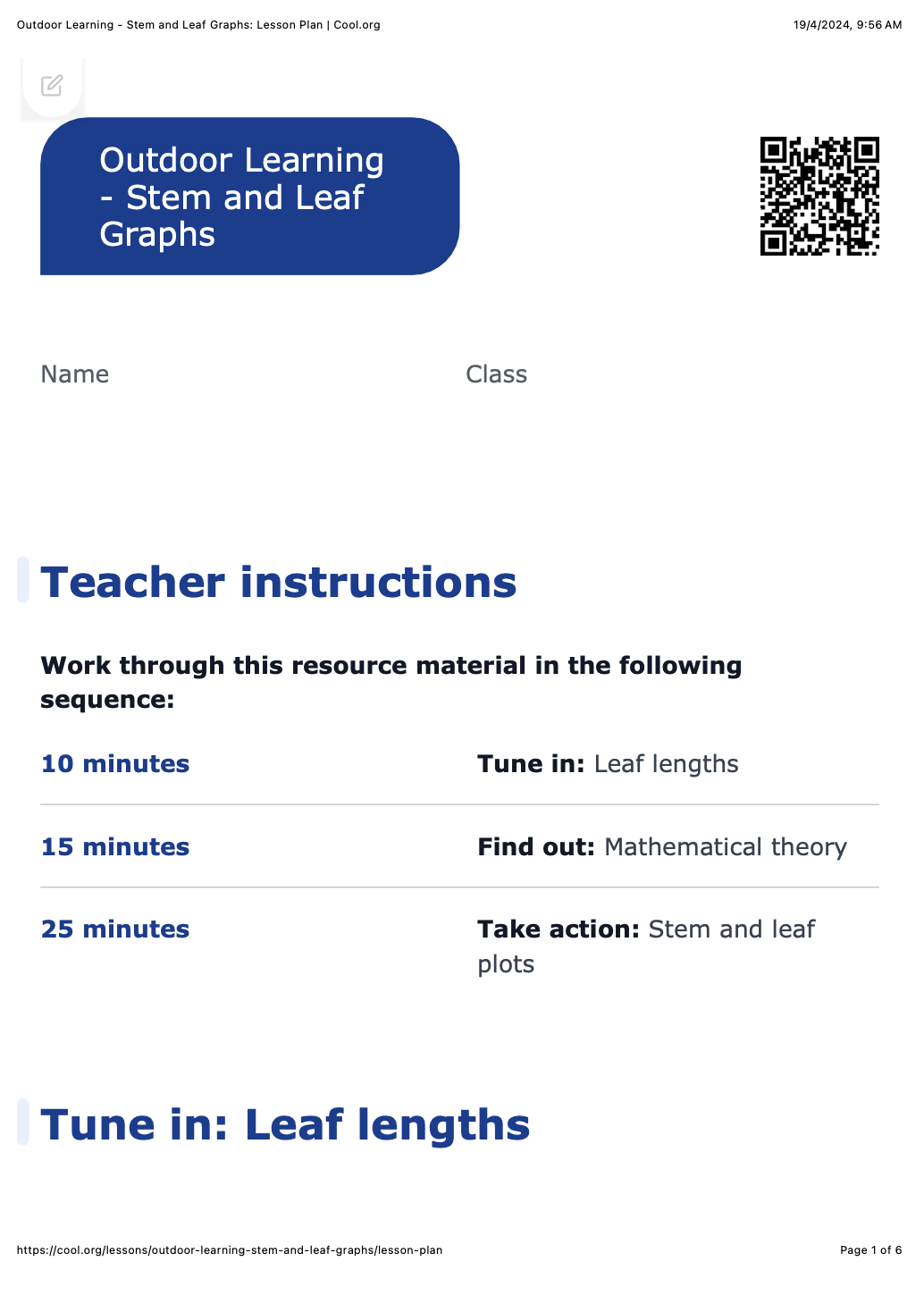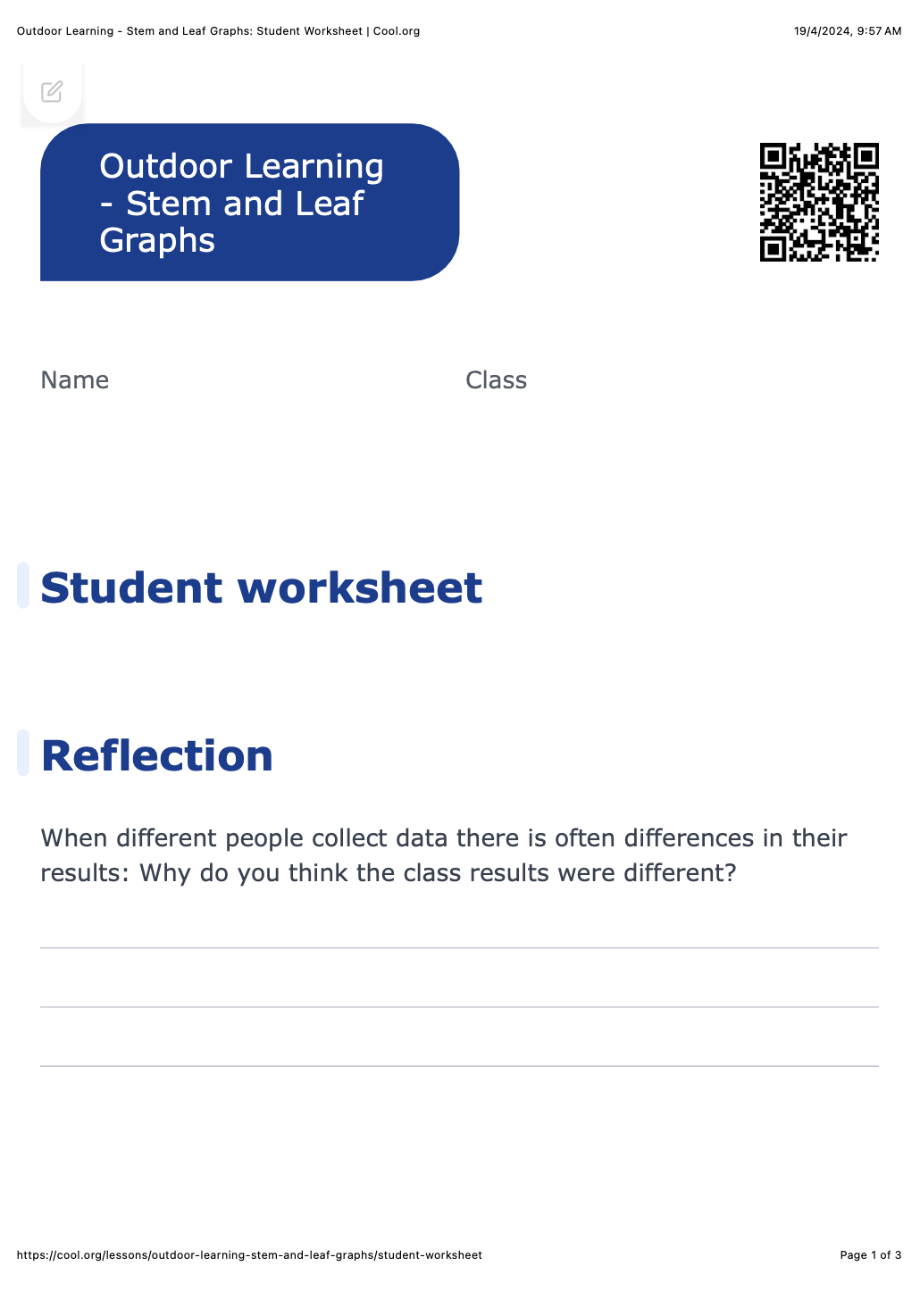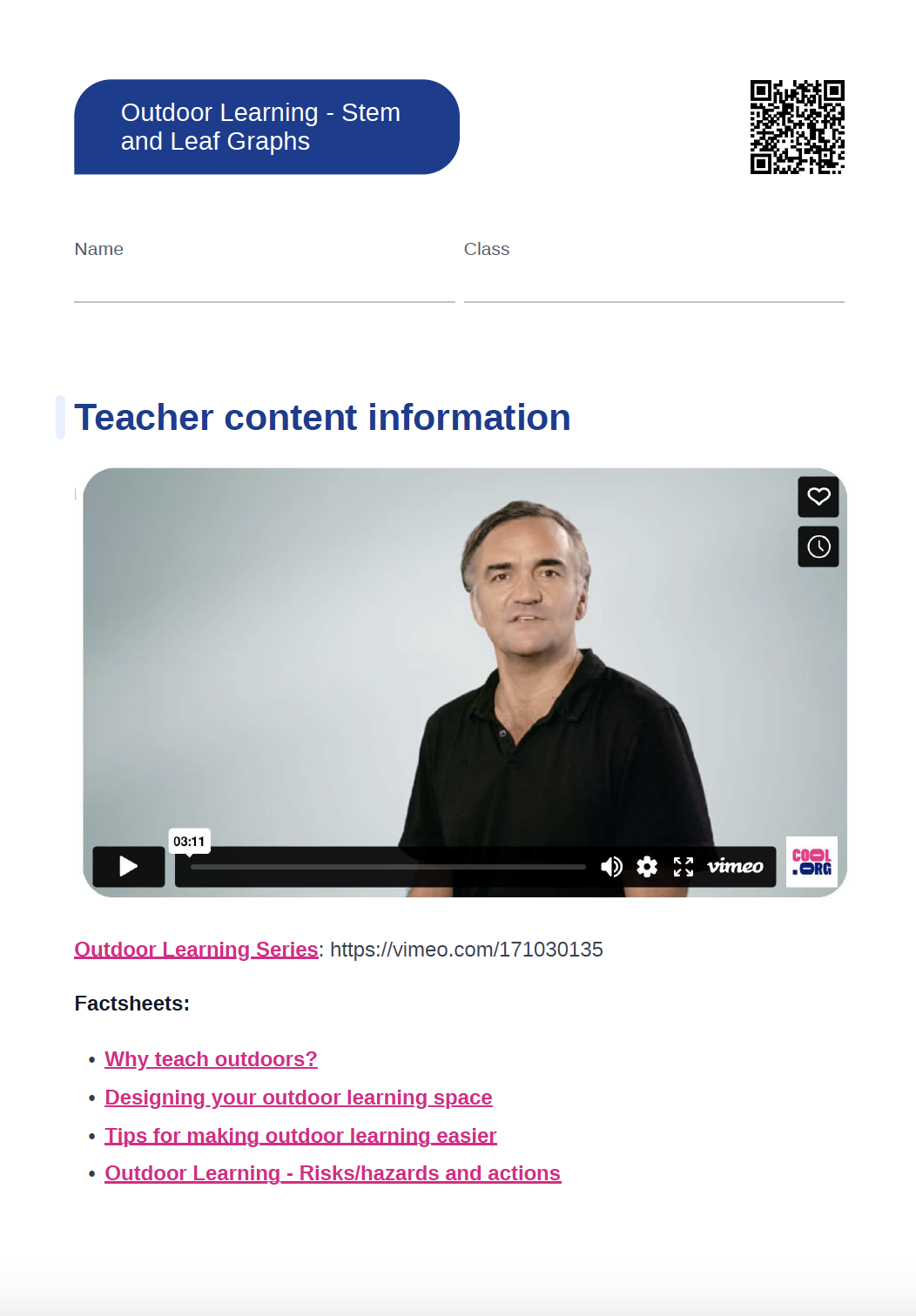Lesson summary
Students learn to use stem and leaf plots outdoors.
Learning intentions:
Students will...
- create an easy to read representation of data on the length of tree leaves in the school grounds.
Success criteria:
Students can...
- gather data
- plot data
- analyse data.
Lesson guides and printables
Curriculum links
Select your curriculum from the options below.
Lesson details
Curriculum mapping
Australian Curriculum (v9.0) content descriptions:
Year 7 Mathematics:
Students learn to:
- create different types of numerical data displays including stem-and-leaf plots using software where appropriate; describe and compare the distribution of data, commenting on the shape, centre and spread including outliers and determining the range, median, mean and mode (AC9M7ST02)
General capabilities: Critical and Creative Thinking.
Cross-curriculum priority: Sustainability.
Relevant parts of Year 7 achievement standards:
By the end of Year 7, students plan and conduct statistical investigations involving discrete and continuous numerical data, using appropriate displays. Students interpret data in terms of the shape of distribution and summary statistics, identifying possible outliers.
Resources required
- Student workbooks
Skills
This lesson is designed to build students’ competencies in the following skills:
- problem-solving
- critical thinking
Additional info
Level of teacher scaffolding: Medium - oversee activity and facilitate discussion.
This lesson is designed to be taught outside. It contains all the tools required for students to reap the benefits of being outdoors while learning the outcomes of the Australian Curriculum. By spending time outdoors and connecting to nature, students are more likely to care for and conserve nature as adults.
This is an original Cool+ lesson.
Related Professional Learning
Introduction to Secondary STEM
Quick summary: This course will help you understand the essential foundations of STEM teaching and learning and provide opportunities to help build knowledge, skills and confidence to take on STEM in your classroom.




Welcome back!
Don't have an account yet?
Log in with:
Create your free Cool.org account.
Many of our resources are free, with an option to upgrade to Cool+ for premium content.
Already have an account?
Sign up with:
By signing up you accept Cool.org's Terms and Conditions(Opens in new tab) and Privacy Policy(Opens in new tab).